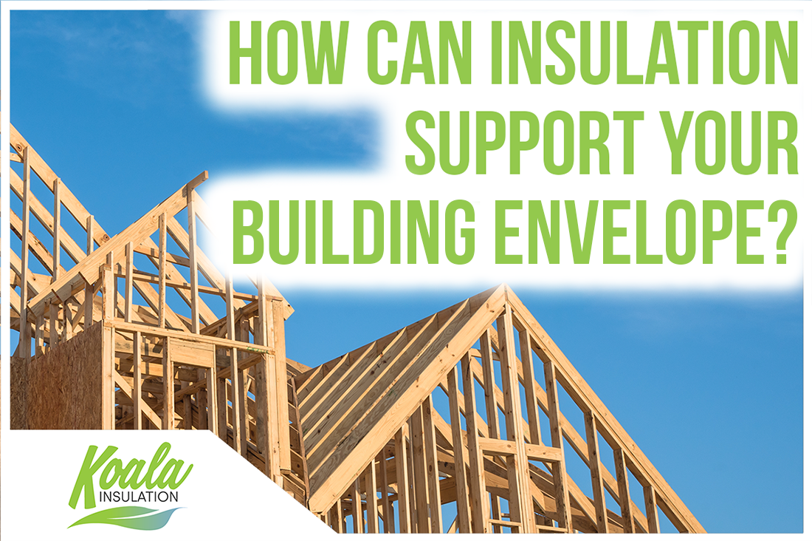How Can Insulation Support an Albuquerque Building Envelope?

As a homeowner, it's important to know as much as possible about the current state of your home and its structure. However, it's also understandable to be in the dark about certain industry terms, especially if you weren't involved in the development of the house's construction (and sometimes, even then!) At Koala Insulation of Albuquerque and Santa Fe, we strive to bring insulation education to the general public – this includes explaining common industry terms and needs.
A building envelope is one such area that’s crucial for a homeowner to be familiar with. There are several ways you can improve your home to support the building envelope, reducing costs and monthly bills in the process. Having a strong structure leads to having a long-lasting quality home. Our team of industry experts has put together a basic breakdown of a building envelope and what you can do to support and improve the integrity of your home.
What is a Building Envelope?
The building envelope of your home is simply the divide of the inside and outside of the building. The purpose of the building envelope is to help keep the interior of your home climate controlled. The exterior system includes windows, doors, the roof, floor, and even your foundation and insulation. When it comes to making your home energy-efficient, many home renovations aren't going to matter if you have a poor building envelope because of air leakage, irregular temperatures, and more.
A climate-controlled building increases your home's energy efficiency and reduces health risks. Keeping the heat inside during the winter and at bay during the summer means your HVAC system puts in less work to keep the inside of your home temperature regulated. While the main purpose of your home's envelope is to keep your home climate controlled, it has a number of other functions. The building envelope also significantly supports the strength of your home's structure, improving how well it can take external forces and weight.
Insulation and Heat Transfer
Insulation is an important factor in maintaining a strong and effective building envelope. This is because a primary function of insulation is also climate control and temperature regulation. While you may be familiar with the product in your attic, did you know insulation material is installed throughout your home? Batt, blown-in, or spray foam lines the insides of your walls and floors, in between ceiling joists, and protects your basement and crawl spaces.
Insulation is designed to reduce the rate of heat transfer, which is how heat enters and exits a building. An insulation’s R-value is the resistance value to heat, measuring how effective the material can slow the transfer of heat between structures. The higher the R-value, the better an insulation material can regulate your home’s temperature. Not only does it keep heat from entering and leaving your building, but it also slows the rate at which the heat travels between rooms and floors. If you find one room or even a whole side of your home that’s too cold or hot in comparison to the rest of the house, you may need updated insulation.
How Insulation Supports Your Building Envelope
Your building envelope is significantly improved with properly installed insulation that has quality coverage throughout the house. The primary support that insulation provides is attributed to the increased temperature regulation. But most material also contributes to the safety and integrity of your building envelope. Many types of insulation are either treated chemically or have natural properties to resist moisture, fire, and even pests. Mold growth, bacteria, infestation, and heat damage not only damage the building envelope but can significantly increase the rate of deterioration for the material and structure.
Other insulation types can even support the structural integrity of your home. For example, closed-cell spray foam is a great choice when it comes to improving your building envelope. It has an average R-value of 6.9 per inch, which is one of the highest out of the common materials to install in your home (e.g., blown-in fiberglass insulation has about 2.7 R-value while open-cell spray foam has an R-value of about 3.7). Closed-cell spray foam is also very rigid, which provides additional strength to the joists and walls it’s applied onto.
Learn More with Your Local Insulation Experts
Now that you understand the basics of your home's building envelope and how insulation can provide support, consider the following questions:
- How familiar are you with the integrity of your home’s exterior shell?
- Did you have a hand in the construction or are you the newest in a long line of owners?
- When was the last time you had your home’s structure inspected?
If you're not confident in the condition of the house's structural support, don't worry; it's not a common area to keep up with and there can be conflicting advice on how often you should have a professional inspect the structure and foundation. Like many hidden aspects of a building, it falls under the "out of sight, out of mind" principle. With the knowledge you have now, you can take the necessary steps toward answering these questions.
Koala Insulation of Albuquerque and Santa Fe has a team of experienced industry experts that is dedicated to helping you develop a better understanding of your home and its needs. With our free evaluations, we can provide a breakdown of your home's current condition so you and your household can develop a quality-of-life plan. Not only can you make cost-effective decisions on what needs to be prioritized sooner, but you can also plan ahead for future target areas that will need to be updated. Contact our team today to learn more about insulation's impact on your home and schedule your free evaluation before the new year.
Find Your Location


Get a quote


